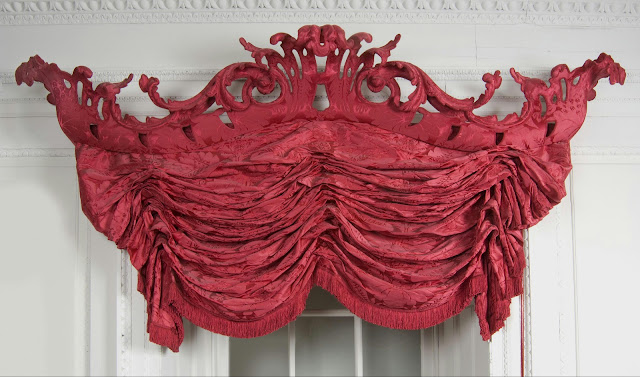 |
| Anonymous British Artist Don't Keep a Diary ca. 1942 lithograph (poster) Victoria & Albert Museum, London |
 |
| Herbert Bayer Auto-Portrait 1932 gelatin silver print (photomontage) Victoria & Albert Museum, London |
 |
| Jan Boeckhorst Apollo and Daphne ca. 1640 watercolor and gouache Getty Museum, Los Angeles |
 |
| Brassaï Graffiti ca. 1955 gelatin silver print Tate Gallery |
 |
| Günter Brus Untitled (series, Night Quartet) 1982 drypoint Tate Gallery |
 |
| Claude Cahun Untitled (Assemblage) 1936 gelatin silver print Tate Gallery |
 |
| Jean-Baptiste Carpeaux Sketch for Pietà ca. 1870 tempera and watercolor on paper Princeton University Art Museum |
 |
| Frankie Creith Garment I 2002 paper, net, gauze - stitched and varnished Victoria & Albert Museum, London |
 |
| Charles Demuth In Vaudeville - The Bicycle Rider 1919 drawing, with watercolor National Gallery of Art, Washington DC |
 |
| Herman Faber Corpse with Wrapped Head and Feet ca. 1890 drawing Philadelphia Museum of Art |
 |
| Marcel Fromenti Fashion Illustration for The Lady 1953 drawing Victoria & Albert Museum, London |
 |
| Gaetano Gandolfi Faun in Landscape bearing Putti on Tray ca. 1785 drawing Victoria & Albert Museum, London |
 |
| Alberto Giacometti Still Life with Two Plaster Heads 1950 oil on canvas Milwaukee Art Museum |
 |
| Great Exhibition (London) Admission Ticket of W.E. Gladstone 1851 ivory British Museum |
 |
| Marsden Hartley Geometric Figure ca. 1920 oil on canvas Statens Museum for Kunst, Copenhagen |
Beyond their official duties within the papal curia and their involvement in the sodalities, humanists also took part in the complex ceremonial and festive life of the Eternal City. Because of Rome's centrality to Christendom, it offered more opportunities than did other Italian centers for humanistic contributions to ceremonial events, whether in the form of orations, poems, or iconographical programs. Such occasions for public display showcased humanists' talents. Thus, they were among those offering sermons before the popes; they delivered orations to cardinals entering conclaves; they delivered funeral orations; and they took part in such pageantry as Alexander VI's celebration of the Jubilee Year (1500), Julius II's triumphal entry into Rome (1507), and Leo X's coronation rites (1513). Not all such occasions lent themselves to expressions of papal ideology, inasmuch as purpose and context placed constraints upon content. For example, the Masters of the Sacred Palace, the pope's official theologians, sought to ensure that orations delivered before the popes during the liturgy adhered to strict standards of decorum. Focusing upon the solemnity being observed, such presentations were not supposed to celebrate the papacy's military or diplomatic successes. Still, they provided a setting in which humanists could position themselves near the center of the revival of Rome's cultural and intellectual life.
Public processions, by contrast, could blazon papal claims and ambitions. The possesso, the ceremonial procession of a pope-elect from the Piazza San Pietro to the Lateran, included a series of traditional rituals, such as the tossing of coins to the crowd at designated points. In the coronation of Leo X, however, the focus had shifted decisively to the procession itself, in which music, elaborate costumes, and decorative triumphal arches replete with art and inscriptions gave graphic expression to Roman humanist ideology, associating Leo both with Biblical precedents such as the "Lion of Judah" and with classical gods and goddesses such as Apollo and Athena. The new pontiff, the arches proclaimed, would initiate a golden age that would flourish particularly in Rome. Thus, in their programs for ceremonies, as in their formal writings, humanists expressed their shared ideology and, by implication, reinforced their own role as spokesmen whose harmonious voices defined and dignified the Renaissance papacy.
– Kenneth Gouwens, from Remembering the Renaissance: Humanist Narratives of the Sack of Rome (Brill, 1998)




-1937-gelatin-silver-print-National-Gallery-of-Australia-Canberra.jpg)
-Miss-Peggy-Buchanan-1938-gelatin-silver-print-National-Gallery-of-Australia-Canberra.jpg)


























-c1985-screenprint-(postcard)-National-Gallery-of-Australia-Canberra.jpg)
-c1986-screenprint-(postcard)-National-Gallery-of-Australia-Canberra.jpg)
-c1986-screenprint-(postcard)-National-Gallery-of-Australia-Canberra.jpg)
-National-Gallery-of-Australia-Canberra.jpg)











